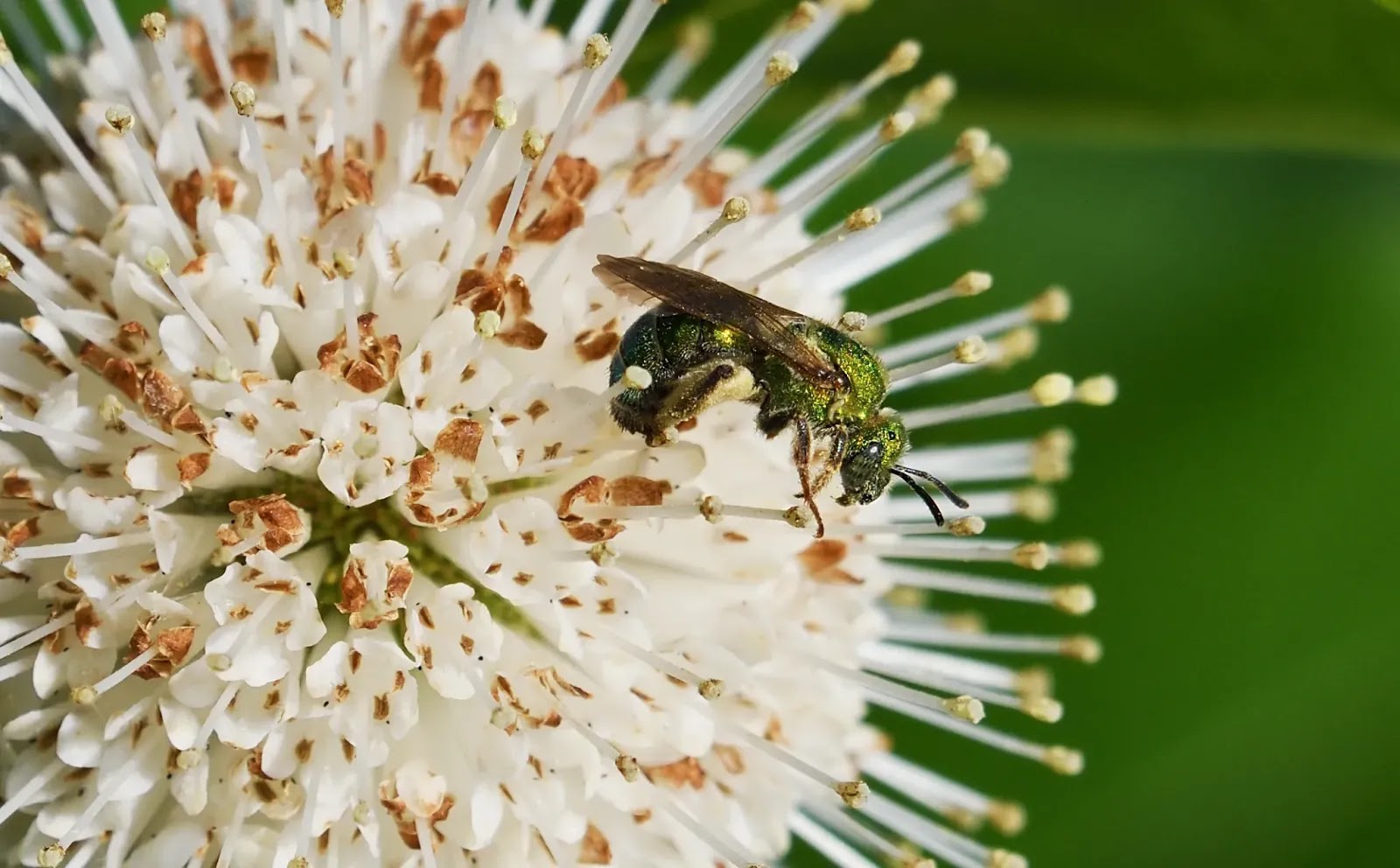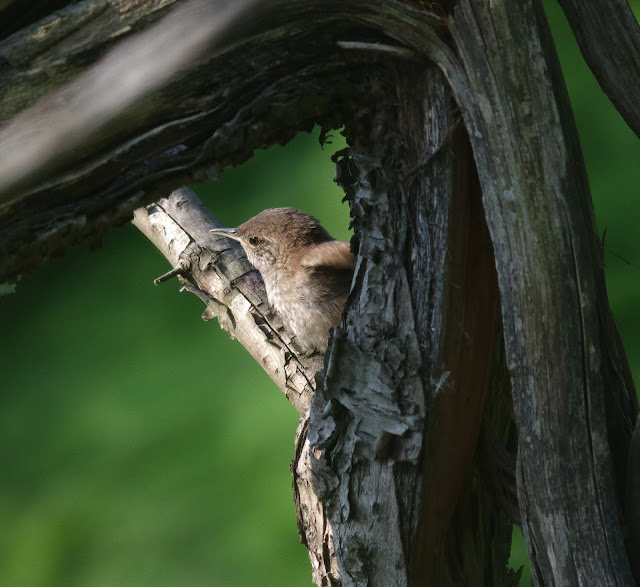Summer Visitors
My last post gave witness to some of the many colourful warblers that passed through Lakeside Park on their migration north. But warblers were not the only birds to visit Lakeside Park on their journey from America. Baltimore orioles also came with the warblers and they are still here.
The males are brightly coloured with the contrast of black on their heads and wings. They rarely sit still for long, tending to spend most of their time up in the tops of the trees, but they do occasionally come down low enough for the odd photo opportunity.
Baltimore orioles are fond of fruit, nectar and judging from the following photo, really big insects.
Female Baltimore orioles are also colourful, though they lack the black on their heads.
That does make perfect sense, as they will soon be sitting on eggs and the need to be camouflaged will be paramount.
The young males are easy to distinguish with the black on their heads being in a transitional stage. They show more of a mottled pattern.
Baltimore orioles are quite vocal and they sing with such vigour that it is at times difficult to tell if they are close or far away.
This photo was taken from some distance away and I was quite amazed that there was any detail to show at all. It is a photo of another oriole. An immature male orchard oriole that appears almost identical to the juvenile male Baltimore oriole, although the orchard oriole is a little smaller and not as brightly coloured. There is also a noticeable difference in their beaks. If you scroll back to the previous photo of the Baltimore oriole you will notice a straight line through the centre of its beak, whereas the orchard oriole has a distinct downward curve toward the end of its beak.
Another bird that is gracing us with its company and that could at a distance be mistaken for an oriole, is the scarlet tanager. It also likes to stay up high in the canopy of the trees.
Eastern kingbirds are one of my favourite summer visitors to Lakeside Park and they will stay to nest. They have a distinctive call that always lets me know of their whereabouts.
I just love the white feathers on their chest, they appear to be so luxurious.
Another recent arrival, and this time a much smaller bird that had been leading me on a merry dance on the far side of Shoemaker Creek. This bird constantly calls and you would think that that would help, but only in knowing its approximate location. They do not stay still for a second, favouring the denser outer foliage of trees which makes it almost impossible to obtain photos of any worth.
My persistence finally paid off though with this photo of a blue-gray gnatcatcher.
This veery has the same cinnamon colour that the hermit thrush displays on its tail feathers, but with the veery that cinnamon colour extends up and over its back and head. The veery's eyering is also less distinct than the hermit thrush's.
The following photo was taken through dense cover with a branch obscuring the back of the bird and I do wish that I had a better photo to show, but for now, it will have to suffice. This is a Swainson's thrush, and again, very similar to the hermit thrush and the veery. The Swainson's thrush has more defined spots on its chest and a darker brown on its back. It also shows a larger, more buffy eyering.
Nesting boxes were placed around the edge of Shoemaker Lake a few years ago, much to the delight of the resident European sparrows who had been making good use of them, but this year a pair of summer visitors are showing some interest. They are tree swallows.
I am hopeful that they will be able to successfully rear their young.
The males are brightly coloured with the contrast of black on their heads and wings. They rarely sit still for long, tending to spend most of their time up in the tops of the trees, but they do occasionally come down low enough for the odd photo opportunity.
Baltimore orioles are fond of fruit, nectar and judging from the following photo, really big insects.
Female Baltimore orioles are also colourful, though they lack the black on their heads.
That does make perfect sense, as they will soon be sitting on eggs and the need to be camouflaged will be paramount.
The young males are easy to distinguish with the black on their heads being in a transitional stage. They show more of a mottled pattern.
Baltimore orioles are quite vocal and they sing with such vigour that it is at times difficult to tell if they are close or far away.
This photo was taken from some distance away and I was quite amazed that there was any detail to show at all. It is a photo of another oriole. An immature male orchard oriole that appears almost identical to the juvenile male Baltimore oriole, although the orchard oriole is a little smaller and not as brightly coloured. There is also a noticeable difference in their beaks. If you scroll back to the previous photo of the Baltimore oriole you will notice a straight line through the centre of its beak, whereas the orchard oriole has a distinct downward curve toward the end of its beak.
Another bird that is gracing us with its company and that could at a distance be mistaken for an oriole, is the scarlet tanager. It also likes to stay up high in the canopy of the trees.
Their beak is shorter, more robust than the orioles, and their feathers carry more of a reddish colour that continues up over their heads. They will feed on fruit, but as you can see, they predominantly feed on insects.
Eastern kingbirds are one of my favourite summer visitors to Lakeside Park and they will stay to nest. They have a distinctive call that always lets me know of their whereabouts.
I just love the white feathers on their chest, they appear to be so luxurious.
Another recent arrival, and this time a much smaller bird that had been leading me on a merry dance on the far side of Shoemaker Creek. This bird constantly calls and you would think that that would help, but only in knowing its approximate location. They do not stay still for a second, favouring the denser outer foliage of trees which makes it almost impossible to obtain photos of any worth.
My persistence finally paid off though with this photo of a blue-gray gnatcatcher.
The inclusion of the next four images of small insect feeding birds had to wait until after I'd sought some expert advice. My knowledge of Canadian birds is gradually growing with each season, but there is much that I have to learn. Four images of birds which appear to be almost identical. This first photo is definitely of an eastern wood peewee:
And possibly also this photo.
The following two images are almost certainly flycatchers, Empidonax type flycatchers. These birds are actually so similar that they can only be correctly identified after hearing their calls.
Possibly willow flycatchers or alder flycatchers. They are so difficult to distinguish that they are often referred to as Traill's flycatchers. After taking the advice of someone much more knowledgeable than myself, my confusion seems justifiable as these flycatchers are almost impossible to tell apart until they sing.
We have already been enjoying the company of the hermit thrush since mid-April (https://wildlakeside.blogspot.com/2020/04/ontario-thrushes.html), but we now have two more thrushes.
This veery has the same cinnamon colour that the hermit thrush displays on its tail feathers, but with the veery that cinnamon colour extends up and over its back and head. The veery's eyering is also less distinct than the hermit thrush's.
The following photo was taken through dense cover with a branch obscuring the back of the bird and I do wish that I had a better photo to show, but for now, it will have to suffice. This is a Swainson's thrush, and again, very similar to the hermit thrush and the veery. The Swainson's thrush has more defined spots on its chest and a darker brown on its back. It also shows a larger, more buffy eyering.
Nesting boxes were placed around the edge of Shoemaker Lake a few years ago, much to the delight of the resident European sparrows who had been making good use of them, but this year a pair of summer visitors are showing some interest. They are tree swallows.
The male, sitting atop of the support for the nesting box, showing off the deep blue of his feathers.
The female's feathers are browner and just as beautiful in their own way with splashes of blue on her head and wings.
I am hopeful that they will be able to successfully rear their young.
From what appears to be the perfect location on the edge of Shoemaker Lake.
Copyright © wildlakeside.blogspot.com 2020 Scott Atkinson All Rights Reserved.





























Comments
Post a Comment